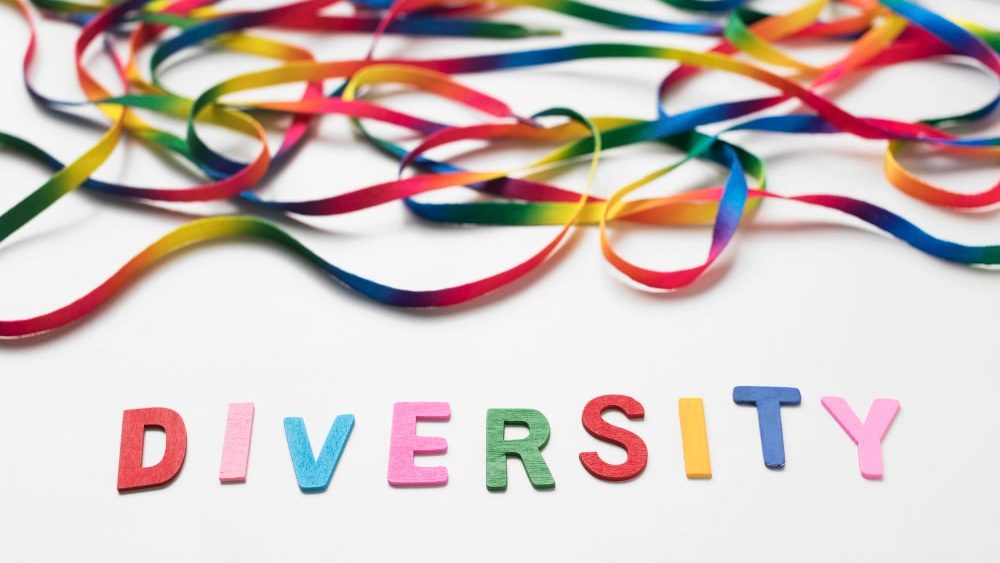Introduction
The concept of an inclusive workplace has gained immense significance, fostering a harmonious and dynamic environment. In the context of China, a nation rich in cultural diversity, the pursuit of diversity and inclusion initiatives holds a pivotal role.
This article delves into the imperative of such initiatives, exploring their relevance within China’s unique societal and corporate landscape. By championing inclusivity, China stands poised to cultivate a more equitable and prosperous future for its workforce.


Diversity Landscape in China
A. Cultural Diversity in the Chinese Workforce
The Chinese workforce stands as a microcosm of cultural diversity, a testament to the nation’s rich historical tapestry and evolving global outlook. With a population encompassing various ethnicities, languages, and traditions, China’s workplaces reflect a vibrant mosaic of identities. From the Han majority to ethnic minorities such as Uighurs, Tibetans, and Zhuang, this diversity weaves intricate threads into the fabric of the nation’s labor landscape.
Such cultural richness, while offering a plethora of perspectives and talents, also presents unique challenges. Communication can sometimes be hindered by linguistic differences, potentially leading to misunderstandings or misinterpretations. Moreover, the fusion of traditional Chinese values with modern work expectations can create a dynamic tension that requires adept navigation.
Embracing this cultural diversity necessitates a two-fold approach. Firstly, acknowledging and respecting the varied heritage and practices of each individual is paramount. Secondly, fostering an environment of cross-cultural learning and sensitivity can bridge gaps and enhance collaboration.
By capitalizing on its cultural diversity, China’s workforce has the potential to innovate, problem-solve, and engage on a global scale. Recognizing and harnessing this diversity not only empowers individual employees but also enriches the overall work culture, positioning China on the path to a more inclusive and prosperous future.
B. Ethnic and Linguistic Variance
Ethnic and linguistic variance adds yet another layer of complexity to China’s diverse workforce. The country boasts a multitude of ethnic groups, each contributing a unique blend of traditions, customs, and worldviews. This mosaic includes Han Chinese, constituting the majority, as well as various ethnic minorities such as Hui, Manchu, and Yi, among others.
Language, a quintessential aspect of culture, serves as both a bridge and a barrier in the workplace. While Mandarin (Putonghua) serves as the official language, regional dialects, and minority languages also hold significant sway. This linguistic diversity can sometimes pose challenges in effective communication and collaboration, potentially impacting productivity and cohesion.
Navigating ethnic and linguistic variance requires a multi-pronged approach. Companies can prioritize language training and proficiency programs to promote clearer communication. Additionally, fostering a culture of inclusivity where various languages and backgrounds are celebrated can create a sense of belonging for all employees.
By recognizing the value of ethnic and linguistic diversity, Chinese workplaces can harness a plethora of talents, ideas, and perspectives. Embracing this variance enriches the work environment, drives innovation, and positions companies to thrive in an interconnected global landscape.
C. Gender Imbalance and Women Empowerment
Gender imbalance continues to cast a shadow over the Chinese workplace, reflecting deeply entrenched societal norms. Historically, traditional beliefs have perpetuated a preference for male employees, particularly in leadership roles. This has led to an underrepresentation of women in various sectors, hindering the realization of their full potential.
However, winds of change are gusting through China’s corporate corridors as women empowerment gains momentum. Efforts to bridge the gender gap are being spearheaded by both governmental policies and corporate initiatives. Measures like anti-discrimination laws and maternity leave rights are paving the way for a more equitable work environment.
Women empowerment initiatives encompass leadership training, mentorship programs, and flexible work arrangements, allowing women to balance career aspirations with familial responsibilities. As a result, more women are ascending the ranks and shattering glass ceilings, contributing to a diverse and inclusive workforce.
The transformational power of women’s participation is undeniable. Companies are discovering that diverse leadership teams enhance decision-making, creativity, and overall business performance. By championing women’s empowerment, China’s workplaces are not only challenging gender stereotypes but also fostering an environment where every employee can thrive and contribute meaningfully.
Challenges to Inclusion in the Chinese Workplace
A. Traditional Cultural Norms and Their Impact
Traditional cultural norms wield a profound influence on China’s workforce, shaping behaviors, expectations, and interactions. These norms, deeply ingrained in society, can both enrich and challenge the modern workplace. Respect for authority and hierarchical structures, a cornerstone of Confucianism, can enhance organizational order, but it may also stifle open communication and innovative thinking.
Moreover, the concept of “face” plays a pivotal role, in affecting decisions, negotiations, and conflicts. While preserving face can uphold social harmony, it might impede constructive feedback and hinder candid discussions. Additionally, the prevalence of “guanxi” or personal relationships can impact hiring and advancement, sometimes overshadowing merit-based considerations.
Incorporating these norms into an inclusive workplace requires a delicate balance. Companies can foster cultural awareness and provide cross-cultural training to facilitate effective communication and collaboration. Embracing elements of traditional values that enhance teamwork and respect while encouraging adaptability can create a harmonious blend of tradition and progress.
By acknowledging the impact of traditional cultural norms, China’s workplaces can harness the strengths of heritage while modernizing their practices. This synthesis can foster a more vibrant and inclusive work environment, where diverse perspectives thrive, and employees are empowered to navigate cultural nuances to achieve collective success.


B. Language and Communication Barriers
Language and communication barriers pose intricate challenges within China’s diverse workforce. While Mandarin is the official language, dialects and minority languages color the linguistic landscape, potentially hindering effective interactions. Miscommunications arising from language differences can lead to misunderstandings, errors, and hindered teamwork.
Furthermore, the nuanced subtleties of language may impede the clear expression of ideas, stifling innovation and collaboration. Employees who are not fluent in Mandarin might face difficulties participating in discussions or expressing their viewpoints, potentially leading to their exclusion from important decision-making processes.
Addressing language and communication barriers demands proactive measures. Companies can invest in language training programs, ensuring employees are equipped with proficient Mandarin skills. Additionally, fostering an inclusive atmosphere that encourages patient and active listening, where diverse voices are valued and respected, can mitigate communication challenges.
By conquering language barriers, Chinese workplaces can unlock a treasure trove of talent and ideas, ultimately propelling innovation and productivity. Embracing linguistic diversity enhances cross-cultural understanding and opens doors to more inclusive and effective collaboration, laying the foundation for a stronger, united workforce.
C. Gender Stereotypes and Discrimination
Gender stereotypes and discrimination cast a shadow over China’s workforce, hindering the full realization of an inclusive and equitable environment. Deep-rooted societal beliefs often relegate women to traditional roles, perpetuating an uneven distribution of opportunities and responsibilities. These biases can be especially pronounced in leadership positions, where women continue to face barriers to advancement.
Discriminatory practices, such as unequal pay and limited access to decision-making roles, further exacerbate gender disparities. The prevalent notion of men as primary breadwinners and women as caregivers can restrict career growth and deter women from pursuing ambitious goals.
Efforts to combat gender stereotypes and discrimination are gaining traction. Awareness campaigns, training workshops, and policy reforms are aimed at dismantling these barriers and promoting a level playing field. Organizations are increasingly recognizing the benefits of gender diversity, as it fosters creativity, and innovation, and enhances overall performance.
By challenging gender norms and cultivating an environment where all employees are valued based on their skills and contributions, China’s workplaces can break free from the shackles of stereotypes and discrimination. Embracing gender equality not only enriches the work culture but also propels China towards a more progressive, empowered, and thriving workforce.
Emerging Diversity and Inclusion Initiatives
A. Government Policies and Regulations
Government policies and regulations wield a significant influence on shaping an inclusive workplace in China. The nation has taken steps to address diversity and inclusion through various legal frameworks and initiatives. The Chinese government has implemented anti-discrimination laws that prohibit bias based on gender, ethnicity, and other factors, fostering a more equitable environment.
Moreover, policies promoting women’s participation and leadership roles have gained prominence. Quotas for women on corporate boards and initiatives to enhance work-life balance reflect a commitment to gender parity. The government’s emphasis on cross-cultural understanding and sensitivity aligns with efforts to bridge communication gaps among diverse employees.
In addition to gender-focused regulations, China has also pursued strategies to integrate minority groups and promote their cultural heritage. These measures include support for bilingual education and cultural preservation initiatives.
Understanding and adhering to these policies is paramount for businesses operating in China. Companies that proactively align with government directives can not only avoid legal pitfalls but also contribute to a more inclusive society. By collaborating with regulatory efforts, Chinese workplaces can create a foundation for diversity and inclusion, fostering a harmonious, productive, and socially responsible work environment.


B. Corporate Efforts in Promoting Inclusion
Corporate initiatives in China are playing a pivotal role in driving inclusivity within the workplace. Recognizing the inherent value of a diverse workforce, companies are implementing strategies to break down barriers and foster a culture of acceptance.
Dedicated diversity and inclusion (D&I) programs are becoming increasingly common, encompassing a wide array of activities. These initiatives range from mentorship and leadership development programs targeting underrepresented groups to flexible work arrangements that accommodate various needs.
Furthermore, employee resource groups (ERGs) have emerged as powerful tools for creating a sense of belonging. These groups provide platforms for individuals to connect, share experiences, and advocate for inclusivity. Through ERGs, employees can contribute to shaping a more inclusive company culture.
Many companies are also prioritizing unconscious bias training to raise awareness and challenge preconceived notions. This training empowers employees to recognize and address biases, fostering a more respectful and collaborative work environment.
By nurturing inclusivity, companies in China are not only amplifying individual voices but also enhancing innovation and productivity. As the corporate sector champions diversity, it serves as a driving force in propelling China towards a future where all employees can contribute their unique perspectives and talents to create a thriving and harmonious workplace.
C. Cross-Cultural Training and Sensitization Programs
Cross-cultural training and sensitization programs are becoming essential tools in building an inclusive workplace in China. As the workforce becomes increasingly diverse, these programs bridge gaps in understanding and communication, fostering harmonious interactions among employees from various cultural backgrounds.
These initiatives encompass a range of activities, from cultural competency workshops to intercultural communication seminars. They provide employees with valuable insights into different cultural norms, values, and behaviors, facilitating better collaboration and reducing misunderstandings.
Moreover, cross-cultural training promotes empathy and open-mindedness, enabling employees to navigate cultural differences with respect and appreciation. Sensitization programs raise awareness about unconscious biases, helping individuals recognize and challenge their preconceived notions.
In a globalized economy, where teamwork often spans borders, these programs are invaluable. They equip employees with the skills and knowledge to work effectively with colleagues, clients, and partners from diverse backgrounds.
By investing in cross-cultural training and sensitization, companies in China are not only enriching their work environment but also positioning themselves as leaders in fostering a truly inclusive and globally competitive workforce. These programs contribute to breaking down barriers, fostering mutual understanding, and creating a workplace where every individual’s unique contribution is celebrated.
Measuring Impact and Future Prospects
A. Key Performance Indicators for Inclusivity
Key Performance Indicators (KPIs) for inclusivity serve as vital metrics to assess the progress and impact of diversity and inclusion efforts in China’s workplaces. These indicators provide a tangible way to measure the success of initiatives aimed at creating a more equitable and harmonious work environment.
One essential KPI is representation, which gauges the diversity of the workforce at different levels of the organization. Tracking the percentage of underrepresented groups in leadership positions and across departments can reflect the effectiveness of recruitment and advancement strategies.
Employee engagement and satisfaction surveys also offer valuable insights. These KPIs measure the extent to which employees feel valued, respected, and included within the workplace. Higher scores often correlate with improved collaboration, innovation, and overall productivity.
Another crucial KPI is pay equity, ensuring that compensation is fair and unbiased across gender, ethnicity, and other factors. Closing the wage gap is indicative of a commitment to equality and fairness.
Retention rates among diverse employees also shed light on inclusivity. High turnover rates within specific groups could indicate underlying issues that need addressing.
By meticulously monitoring these KPIs, Chinese companies can evaluate their progress, identify areas for improvement, and steer their diversity and inclusion initiatives toward fostering a more vibrant, productive, and inclusive workforce.


B. Tracking Progress and Adapting Strategies
Tracking progress and adapting strategies are essential components of a successful diversity and inclusion journey within China’s workplaces. As initiatives unfold, continuous monitoring allows organizations to gauge the effectiveness of their efforts and make informed adjustments.
Regularly assessing key performance indicators (KPIs) provides quantifiable insights into the impact of diversity and inclusion programs. This data-driven approach helps identify areas of improvement, pinpoint successes, and ensure alignment with overarching goals.
Adaptation is crucial because the landscape of diversity and inclusion is dynamic. As the workforce evolves, strategies must evolve too. Feedback loops, such as employee surveys and focus groups, enable organizations to gather firsthand perspectives and make course corrections.
Flexibility in strategy allows companies to respond to emerging challenges and capitalize on new opportunities. Adapting may involve refining recruitment practices, modifying training methods, or enhancing support systems for underrepresented groups.
By embracing a culture of continuous improvement, Chinese workplaces can foster a more inclusive environment that resonates with their evolving workforce. Regular tracking and strategic adaptation ensure that diversity and inclusion efforts remain relevant, effective, and capable of propelling the organization toward a more harmonious and progressive future.
C. The Future Outlook for an Inclusive Chinese Workforce
The future outlook for an inclusive Chinese workforce is one marked by transformative change and boundless possibilities. As China’s society becomes increasingly interconnected and diverse, workplaces are poised to evolve into vibrant hubs of collaboration, innovation, and respect.
Government initiatives and corporate commitments to diversity and inclusion are expected to deepen, fostering a more level playing field. This will result in increased representation of underrepresented groups in leadership positions, reflecting a broader spectrum of voices and perspectives.
Technological advancements are likely to play a pivotal role, enabling virtual collaborations and breaking down geographical barriers. This will facilitate cross-cultural exchanges and broaden employees’ horizons, ultimately nurturing a more inclusive mindset.
Education and awareness campaigns will contribute to dismantling stereotypes and biases, paving the way for an environment where individuals are valued for their unique attributes. Companies that embrace inclusion will find themselves at the forefront of competitiveness, attracting top talent and cultivating a work culture that thrives on diversity.
The trajectory towards an inclusive Chinese workforce presents a promising future where collaboration knows no bounds, and each employee is empowered to contribute their best. By embracing this vision, China’s workplaces can lead the charge toward a brighter, more united, and harmonious future.
Conclusion
In conclusion, building an inclusive workplace in China is a journey of transformative change driven by a commitment to diversity and equity. By challenging norms, implementing effective strategies, and embracing cultural nuances, Chinese companies can create environments where every individual’s unique talents and perspectives flourish.
The path to inclusivity is not just a corporate responsibility but a societal imperative, promising a future of innovation, collaboration, and shared success. As China continues to evolve, the pursuit of inclusiveness will undoubtedly shape a harmonious and progressive workforce for years to come.